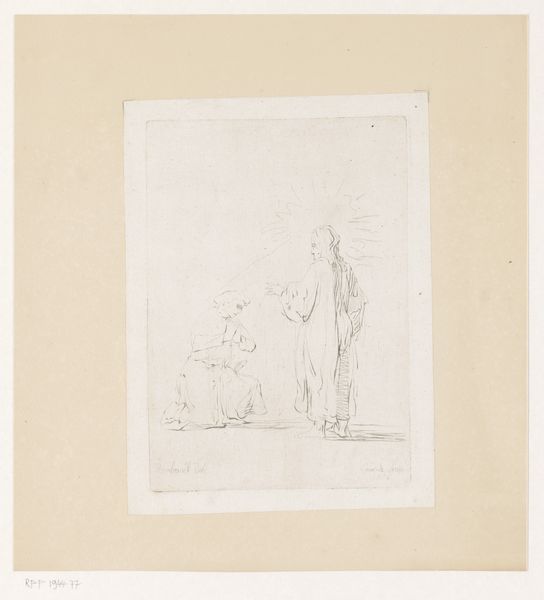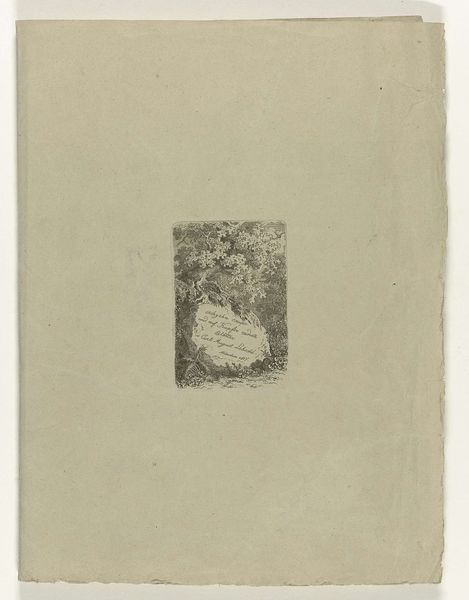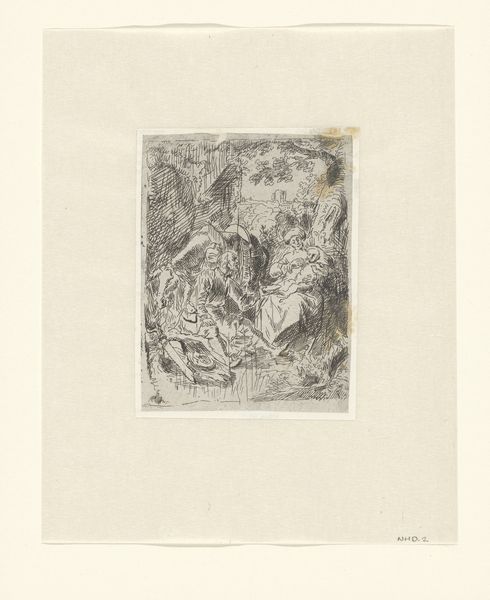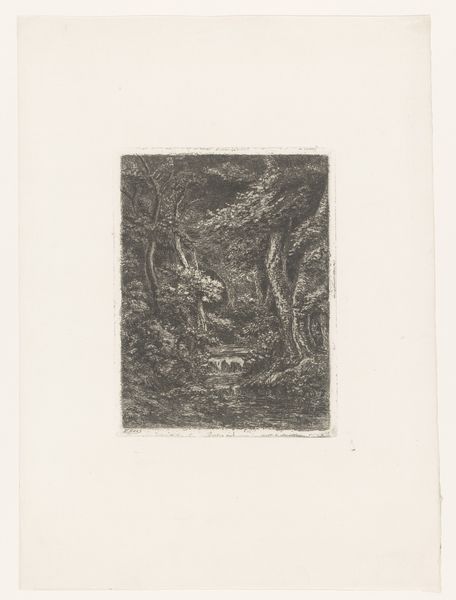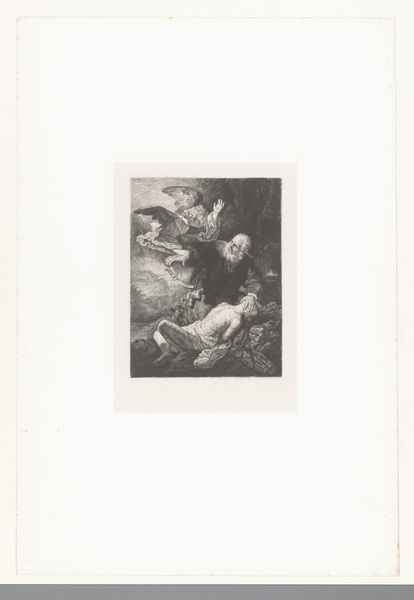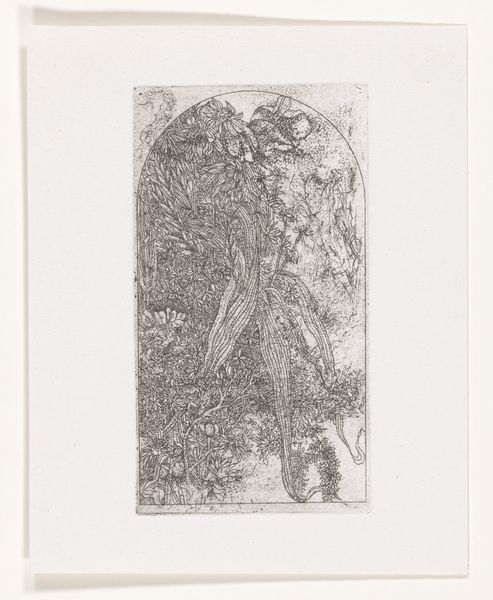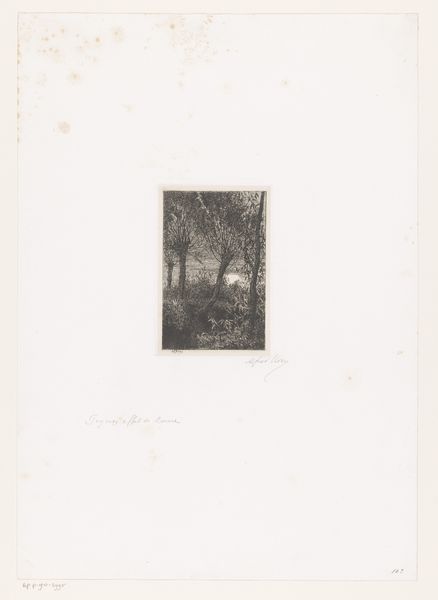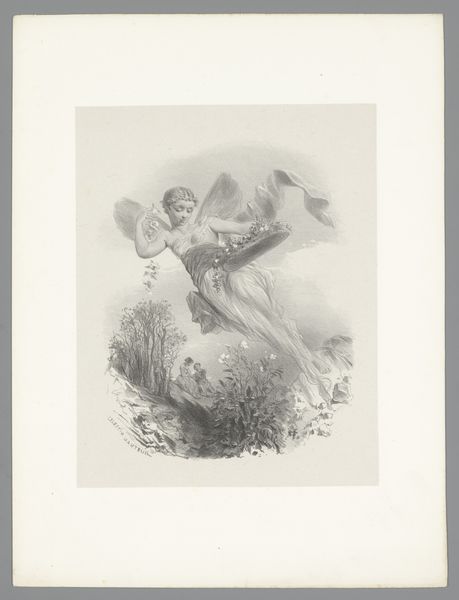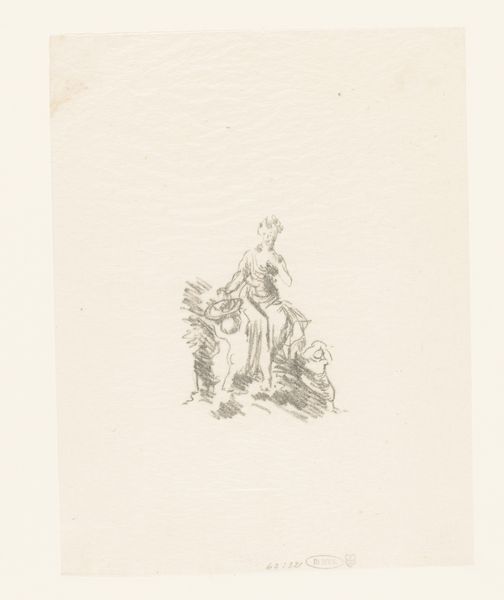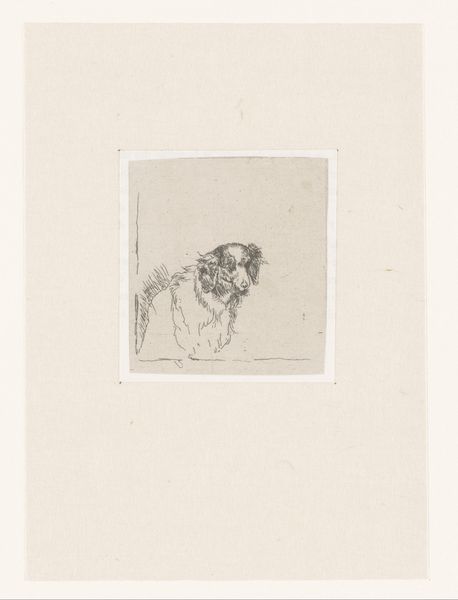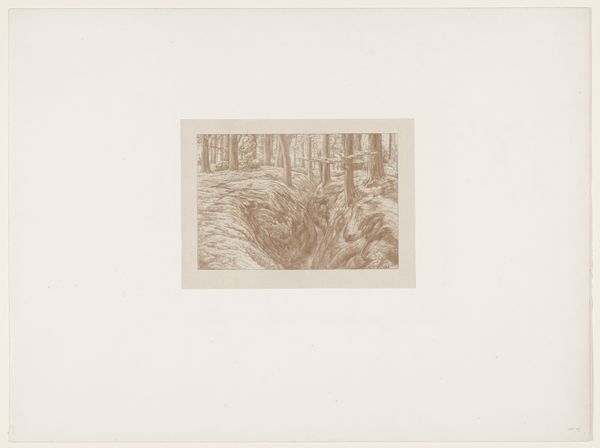
drawing, print, etching, paper, engraving
#
pencil drawn
#
drawing
#
light pencil work
# print
#
etching
#
pencil sketch
#
old engraving style
#
landscape
#
paper
#
pencil work
#
engraving
#
realism
Dimensions: height 105 mm, width 71 mm
Copyright: Rijks Museum: Open Domain
Curator: This delicate etching, "Steen met inscriptie in het gras," which translates to "Stone with inscription in the grass," is attributed to Cornelis Springer and thought to have been created between 1827 and 1891. It resides here at the Rijksmuseum. Editor: It's incredibly subtle; the lightness of the pencil work gives it an ephemeral quality. I immediately feel a sense of transience, underscored by the rough, almost overgrown setting. The stone feels lost and reclaimed by nature. Curator: That's a perceptive reading. The inscription, although partially obscured, alludes to memory and perhaps forgotten narratives. Consider how stones and inscriptions serve as material testaments to stories, even as time and nature erode them. What sort of inscription do you imagine? Editor: Possibly a memorial, something quite personal given how it’s been swallowed up by the unkempt grass. It speaks of inevitable decay and loss; thematically the organic overwhelming the structured. It feels romantic, almost gothic, even in its spareness. The visual texture—all those lightly etched lines—really brings out the earthiness of the scene. Curator: Absolutely. Springer was quite adept at creating a visual record of his observations, offering glimpses into the relationship between humans and their environment. I would point to how his detailed, old engraving style draws you to connect to those themes that are still around us in society. It could be even a fragment from classical literature. Editor: True, I get a sense of how meticulously each blade of grass has been rendered with such fine detail, contributing to that overall texture. He captures something universal about memory—how the sharp edges fade, get overgrown, become difficult to read but never quite disappear. Curator: The use of light is key. The light work gives this work that mysterious aspect to be studied under new points of view and how, although there is a hidden meaning to it, we may get other ways to look and read it. It offers a contemplative atmosphere despite being seemingly simple in its composition. Editor: It definitely has a quiet intensity. This piece serves as a strong reminder about what's important and the power of capturing an ephemeral image with what looks to be simple materials but it offers a bigger reading that initially perceived.
Comments
No comments
Be the first to comment and join the conversation on the ultimate creative platform.
